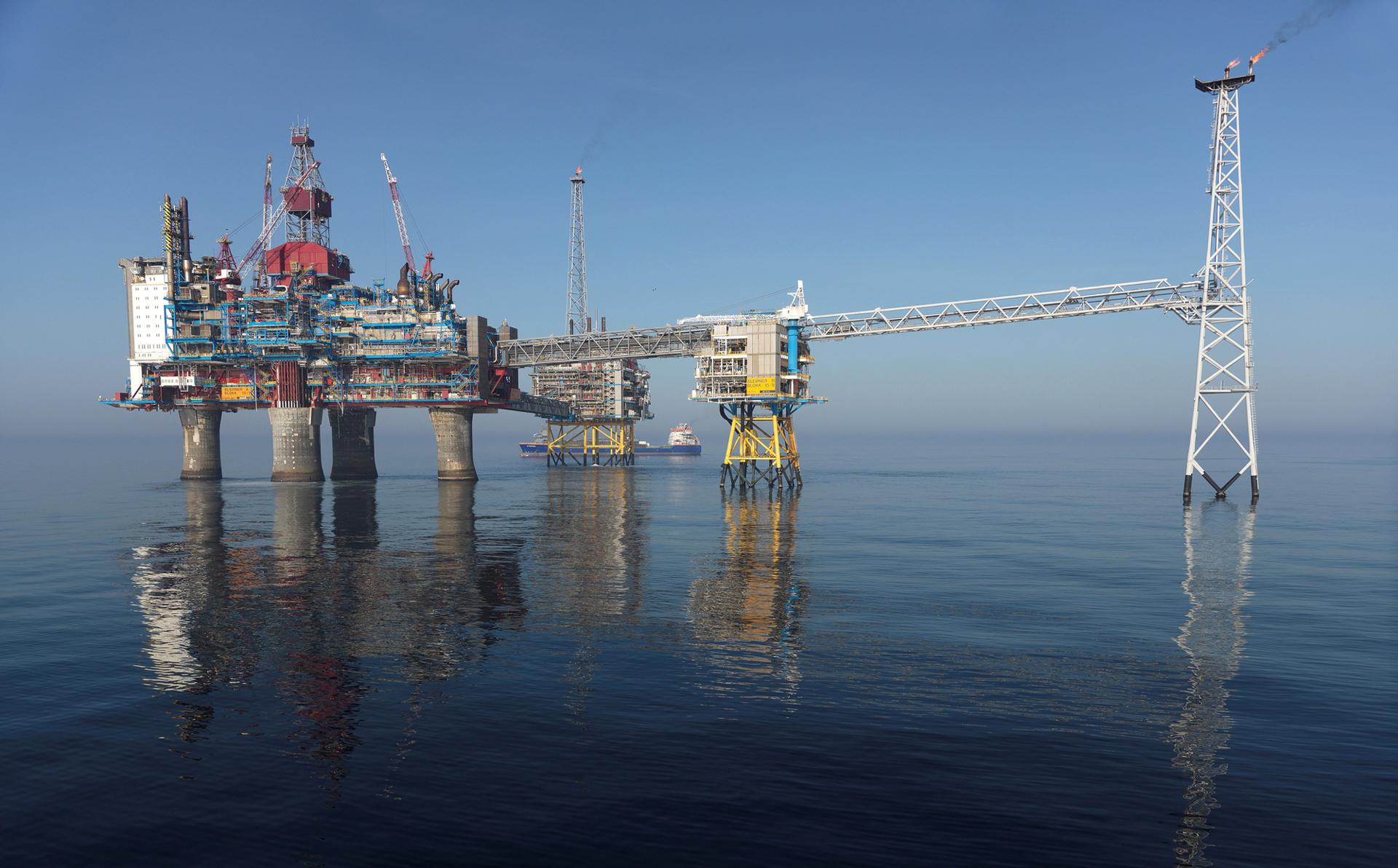PRODUCTION FROM THE FIELD
Source: Norwegian Offshore Directorate
Print illustration Download data PRODUCTION FROM THE FIELD Download PDF Download as image (PNG)
High Contrast Mode
Development
Sleipner Øst is a field in the central part of the North Sea. The water depth is 80 metres. Sleipner Øst was discovered in 1981, and the plan for development and operation (PDO) was approved in 1986. The field has been developed with Sleipner A, an integrated processing, drilling and accommodation facility with a concrete base structure. The development includes the Sleipner R riser facility, which connects Sleipner A to the pipelines for gas transport, and the Sleipner T facility for processing and CO2 removal. The production started in 1993. A PDO for Loke Heimdal was approved in 1991 and for Loke Triassic in 1995. Two subsea templates were installed, one for production from the northern part of Sleipner Øst and one for production from the Loke deposit. The Alpha Nord segment was developed in 2004 with a subsea template connected to Sleipner T. The Utgard field is tied-back to Sleipner T for processing and CO2 removal. The CO2 is injected into the Utsira Formation via a dedicated well at Sleipner A. The Sigyn, Gungne, Gudrun and Gina Krog fields are tied-back to Sleipner A.Reservoir
Sleipner Øst produces gas and condensate. The Sleipner Øst and Loke reservoirs are in Paleocene turbidite sandstone in the Ty Formation, Middle Jurassic shallow marine sandstone in the Hugin Formation and in continental sandstone in the Triassic Skagerrak Formation. In addition, gas has been proven in the Heimdal Formation, overlying the Ty Formation. The Ty Formation has good reservoir quality, while the Skagerrak Formation generally has poorer reservoir quality than both Ty and Hugin Formations. The reservoirs are at a depth of 2300 metres.Recovery strategy
The Hugin Formation reservoir is produced by pressure depletion. The reservoir in the Ty Formation was produced by dry gas recycling until 2005, and production from the Ty reservoir stopped in 2012. To optimise production, wells are produced at a reduced inlet pressure.Transport
Sales gas is exported from the Sleipner A facility via Gassled (Area D) to market. Unstable condensate is transported to the Kårstø terminal by pipeline.Status
Sleipner Øst is in the late tail production phase. The main focus is on increasing reserves and decreasing production decline. It is expected that Sleipner Øst continues operation for tied-back fields after cease of own production. Sleipner has been partly supplied with power from shore via the Gina Krog platform since 2024.ACCRUED INVESTMENTS IN NOMINAL NOK
Source: Norwegian Offshore Directorate
Print illustration Download data ACCRUED INVESTMENTS IN NOMINAL NOK Download PDF Download as image (PNG)
High Contrast Mode
NORWEGIAN OFFSHORE DIRECTORATE'S CURRENT RESOURCE ESTIMATES
All numbers in mill. Sm3 o.e.
Print table Download data NORWEGIAN OFFSHORE DIRECTORATE'S CURRENT RESOURCE ESTIMATES
High Contrast Mode
Visit the Norwegian Offshore Directorate's fact pages for more information
